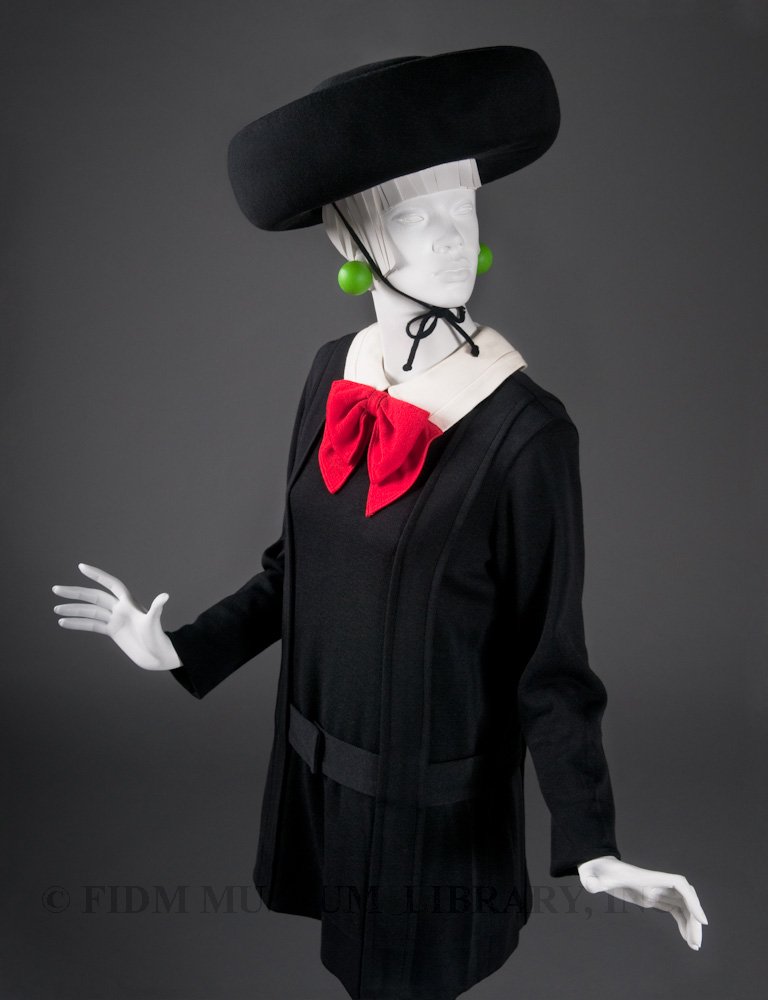Fashion Birthday: Rudi Gernreich
Rudi Gernreich was born on August 8, 1922; today would have been his 91st birthday. As a fashion designer, Gernreich was interested in freeing the body from physical and psychological constraints. His interest in experimentation was sometimes shocking. Gernreich's most infamous design is the breast-baring 1964 monokini swimsuit, which challenged commonly accepted notions regarding physical decency.
The FIDM Museum is extremely fortunate to house the Rudi Gernreich Archive, an extensive collection of Gernreich garments, accessories, patterns, furniture, scrapbooks, and other miscellanea. The Archive demonstrates Gernreich's wide-ranging creativity and includes nearly 1,000 objects. Most of the objects in the archive were donated to the FIDM Museum soon after Gernreich's death in 1985. This graphic ensemble, which was designed by Gernreich in the late 1960s, is an important part of the Archive.
 Tunic Ensemble
Tunic Ensemble
Rudi Gernreich
Fall/Winter 1967-68
G2005.5.42A-C & 2006.5.23
Museum Purchase
Born in Vienna, Austria, Gernreich fled to Los Angeles in 1938 to escape escalating tensions caused by Adolf Hitler's rise to power; he would spend the rest of his life immersed in the Southern California art scene. In 1942, he joined the Lester Horton Dance Theater, where he performed modern dance and designed stage costumes. Gernreich left the troupe to focus on fashion, producing his first ready-to-wear line in 1952. Gernreich's early stage experience provided years of inspiration; his designs always combined ease of movement with theatrical flair. In 1967, he said: "Fashion has become play acting, spooking, wild, and charming. A woman can look like anything she wants—a schoolboy, a kindergartner, a gangster."1
This look, nicknamed "Japanese Schoolboy," exemplifies the late-1960s fashion scene and its interest in androgyny. It consists of the same Breton-style hat, tunic, shorts, and knee socks first worn as school uniforms by boys in post-World War II Japan; clients could even purchase a matching knapsack. Gernreich's creation coincided with unrest in the Japanese educational system that culminated in the violent 1967-68 student protests.
1 Morris, Bernadine. "From Gernreich: The Belted Neckline" New York Times (May 10, 1967): 76